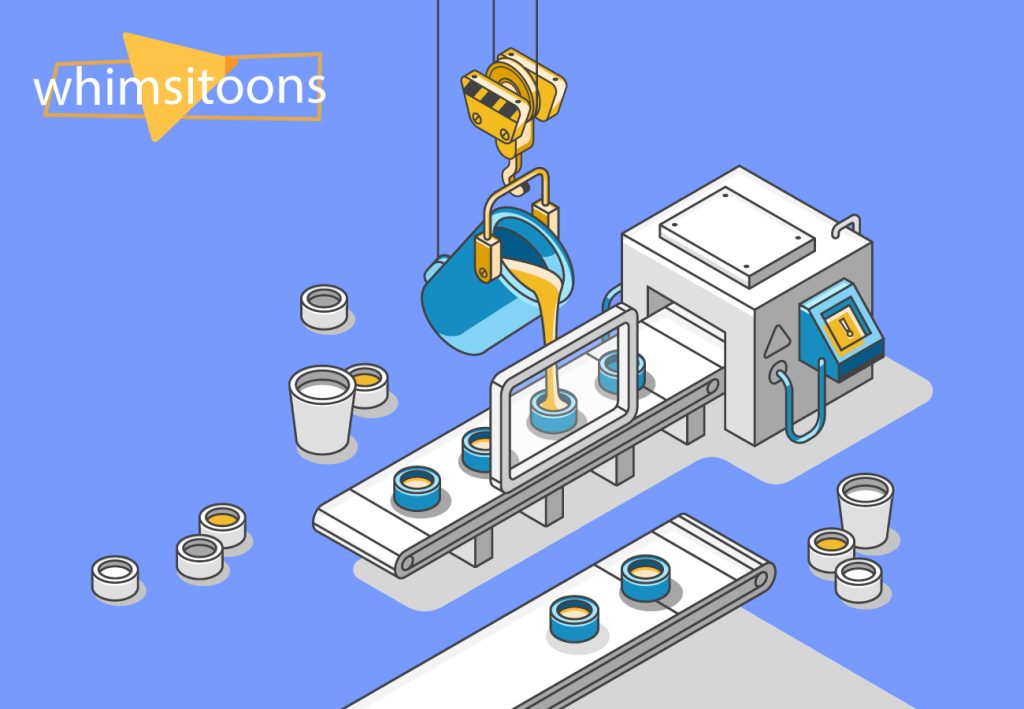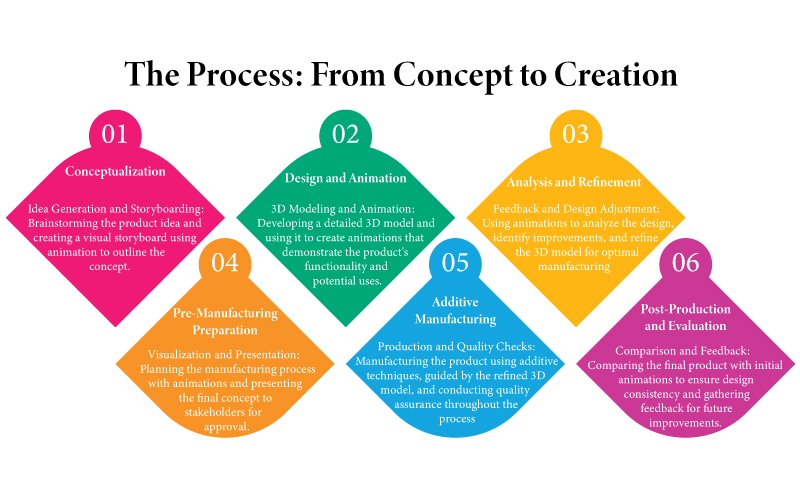Understanding Additive Manufacturing Animation: A Comprehensive Guide

Introduction
Additive Manufacturing Animation technology is at the forefront of revolutionizing product conceptualization, design, and creation. This innovative approach is making significant impacts across various sectors, from crafting intricate aerospace components to designing personalized fashion items. By blending additive manufacturing, commonly known as 3D printing, with the art of animation, we unlock a realm brimming with unparalleled possibilities and transformative potential.
The Impact of 3D Printing
3D Printing Technology has evolved significantly over the years, and when integrated with animation, it brings ideas to life in a visually stunning way. It is not just about creating a visual representation; it’s about storytelling, conveying the process, and showcasing the potential of this technology.
Key Components
- Design Complexity: Unlike traditional manufacturing, additive manufacturing thrives on complexity. The more intricate the design, the more it showcases the technology’s capabilities.
- Material Versatility: From plastics to metals, the range of materials used in additive manufacturing is vast, offering a plethora of creative options.
- Precision and Accuracy: The animations reflect the high precision and accuracy achievable with this technology, highlighting even the minutest details.

Challenges and Solutions
The ride of the 3D modeling file, while groundbreaking, is not without its challenges. As with any emerging technology, obstacles must be navigated and overcome. This section explores the common hurdles faced in this domain and the innovative solutions being developed to address them.
Challenges
- Software Limitations: The complexity of additive manufacturing processes often requires sophisticated animation software. Traditional animation tools may fall short in accurately representing the difficult details of STL processes.
- Hardware Requirements: High-quality animations demand robust computing power. This can be a barrier for smaller organizations or individual professionals who may not have access to the necessary hardware.
- Skill Gap: There’s a significant skill gap in the industry, with a need for professionals who are adept in both 3D animation and additive manufacturing techniques.
- Realism in Representation: Achieving a high level of realism in animations that accurately depict the additive manufacturing process is a significant challenge. It requires detailed knowledge of the materials, processes, and the behavior of objects during printing.
- Time and Resource Intensive: Creating detailed and accurate animations is often a time-consuming process, requiring considerable resources and expertise.
Solutions to Overcome These Challenges
- Developing Specialized Software: To tackle the limitations of existing software, there’s a growing trend towards developing specialized tools designed specifically for it. These tools are tailored to better handle the complexities and unique requirements of this technology printing processes.
- Cloud-Based Rendering Solutions: To address hardware limitations, cloud-based rendering services offer a viable solution. These platforms allow users to render complex animations using cloud computing power, eliminating the need for expensive hardware.
- Focused Educational Programs: Educational institutions and online platforms are beginning to offer courses that combine 3D animation with additive manufacturing. These programs aim to bridge the skill gap by producing a new generation of professionals proficient in both areas.
- Enhanced Realism Through Advanced Techniques: Animators are employing advanced techniques like physically-based rendering (PBR) and machine learning algorithms to increase realism in animations. These techniques allow for more accurate depiction of materials and processes.
- Efficiency-Boosting Tools: New tools and plugins are being developed to integrate into existing animation software, aimed at speeding up the animation process. These tools automate certain aspects of the animation, reducing the time and resources required to produce high-quality results.
- Collaboration Between Industries: Collaborations between tech companies, animation studios, and additive manufacturing experts are fostering innovation. These partnerships leverage the strengths of each sector to develop more efficient and effective solutions to the challenges faced in it.
- Utilizing Feedback Loops: Implementing feedback loops where animators work closely with additive manufacturing experts ensures that animations are not only visually stunning but also technically accurate. This collaboration ensures that animations serve as precise educational tools for understanding complex processes.
Bringing Designs to Life
The beauty of this technology lies in its ability to visualize the making of complex structures. It’s like watching a building being constructed brick by brick, only here, it’s layer by layer.
Applications
Aerospace and Automotive Industries
In industries like aerospace and automotive, where precision is paramount, 3D Modeling File plays a crucial role. It’s used for:
- Prototype Development: Testing and refining designs before actual production.
- Complex Components: Creating parts that would be impossible to manufacture traditionally.
Medical and Dental Fields
The medical and dental fields benefit greatly from this technology. It’s used for:
- Custom Implants: Tailor-made implants for patients, improving compatibility and comfort.
- Surgical Planning: Animations that aid in pre-surgical planning, enhancing accuracy and outcomes.
Fashion and Art
In the realms of fashion and art, additive manufacturing animation allows for:
- Customized Creations: Unique, personalized items that cater to individual tastes.
- Artistic Expressions: Bringing artistic visions to life in a tangible form.
The Impact on Various Industries
| Industry | Application | Benefit |
| Aerospace | Prototype Development | Increased precision and customization |
| Automotive | Complex Component Creation | Enhanced functionality |
| Medical | Custom Implants | Improved patient outcomes |
| Dental | Surgical Planning | Higher accuracy in procedures |
| Fashion and Art | Personalized Products | Unique, creative expressions |
Manufacturing Process Animation in Additive Manufacturing
Integrating manufacturing process animation into additive manufacturing significantly enhances the comprehension and optimization of the 3D printing process. Detailed visual representations provide insights into layer-by-layer construction and material distribution, showcasing the complex interactions of print heads. This tool is instrumental in troubleshooting and refining manufacturing strategies. It has a considerable educational impact, easing the learning process for students and professionals. As we look towards the future, the role of process animations in additive manufacturing is increasingly becoming fundamental, prompting technological and application advancements.
Future Trends
The future of this technology is bright and promising. With advancements in technology, we can expect:
- Increased Realism: Animations becoming even more lifelike and detailed.
- Wider Material Range: Expansion in the variety of materials used in this technology.
- Greater Accessibility: More businesses and individuals adopting this technology.
Educational and Training Opportunities
The expanding field not only demands skilled professionals but also creates a unique educational landscape. This section highlights the various educational and training opportunities available for those interested in pursuing a career in this dynamic field, ensuring a rich, informative, and error-free narrative.
The Rise of Specialized Education Programs
- University Courses and Degrees: Numerous universities worldwide have begun integrating courses focused on additive manufacturing and 3D animation into their engineering and design programs. These courses offer a comprehensive understanding of the theoretical aspects, practical skills, and the latest trends in the industry.
- Technical Institutes and Vocational Training: Technical institutes are offering specialized vocational training programs. These are more hands-on, focusing on the practical aspects of it, including software proficiency, design principles, and understanding of this technology processes.
Online Learning Platforms
- Webinars and Workshops: Industry experts and tech companies frequently host webinars and workshops. These sessions provide insights into the latest advancements and practical demonstrations, making them ideal for both beginners and experienced professionals.
- Online Courses and Certifications: Platforms like Coursera, Udemy, and LinkedIn Learning offer online courses in additive manufacturing and animation. These courses range from beginner to advanced levels, offering flexibility and accessibility to learners worldwide.
Industry Collaborations and Internships
- Partnerships Between Educational Institutions and Tech Companies: Collaborations between universities and leading tech companies in the field of additive manufacturing are on the rise. These partnerships often lead to internship opportunities, where students can gain hands-on experience and industry exposure.
- In-House Training Programs in Companies: Companies specializing in additive manufacturing often conduct in-house training programs for their employees. These programs are tailored to meet the specific needs of the company and keep the staff updated with the latest technologies and methodologies.
Community Engagement and Networking
- Conferences and Seminars: Attending industry conferences and seminars is an excellent way for aspiring professionals to network with industry leaders, stay abreast of current trends, and gain insights into the practical aspects of it.
- Local Community Groups and Clubs: Joining local community groups or clubs focused on this thing and animation can be beneficial. These groups provide a platform for sharing knowledge, discussing challenges, and collaborating on projects.
Continuous Learning and Development
- Keeping Up with Industry Trends: The field of this technology is ever-evolving. Professionals in this field must commit to continuous learning to keep up with the latest technological advancements and industry best practices.
- Subscription to Journals and Publications: Subscribing to relevant journals, magazines, and online publications is another way to stay informed about the developments and breakthroughs in STL.
Conclusion
Additive manufacturing animation is not just a technological advancement; it’s a bridge between imagination and reality. This fascinating synergy of art and science opens up a world of possibilities across various industries. As we continue to explore and innovate, the future looks bright for this remarkable technology.
FAQs
Q 1: What exactly is Additive Manufacturing Animation?
This innovative process involves crafting detailed animated visuals that intricately demonstrate the additive manufacturing (3D printing) process, offering a clear and engaging depiction of its mechanics.
Q 2: How does this technology revolutionize industries like aerospace?
It enables the creation of highly complex, bespoke components, significantly enhancing both the functionality and aesthetic design of aerospace products.
Q 3: Can this animation be employed for medical advancements?
Indeed, it plays a crucial role in the medical field, particularly in the design and creation of customized implants and in improving the precision of surgical planning.
Q 4: How accessible is this technology for small businesses?
With the democratization of this technology, it is increasingly accessible, allowing small businesses to harness its innovative potential for diverse applications.
Q 5: What future trends can we anticipate in this field?
The horizon for this technology includes developments towards more lifelike, intricate animations, an expanded array of printing materials, and broader accessibility, paving the way for widespread adoption and innovation.










